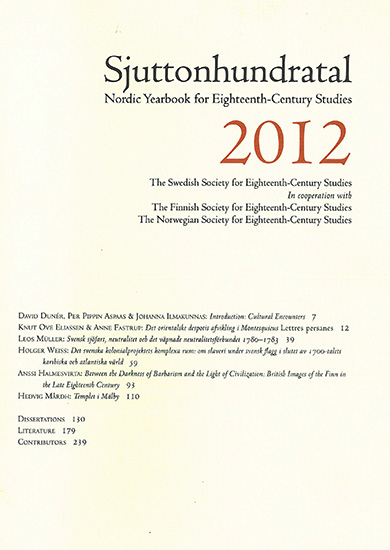Svensk sjöfart, neutralitet och det väpnade neutralitetsförbundet 1780–1783
DOI:
https://doi.org/10.7557/4.3246Keywords:
neutrality, neutral flag, the First League of Armed Neutrality 1780- 1783, trade and shipping, Martin Hübner, Sweden, the American War of IndependenceAbstract
Swedish Shipping, Neutrality, and the First League of Armed Neutrality,
1780–1783.
The purpose of this article is to follow two contradictory perceptions of neutrality in the political discourses of the mid-eighteenth century. One perception drew on the philosophy of natural law and the beneficial view of trade and sociability; here neutrality was perceived as a good and moral basis for peaceful inter-state relations. The second perception derived from the mercantilist view of international trade as an alternative means of warfare; here neutrality was perceived as a shameless exploitation of warfare. It is argued that the concept of neutrality went through an important development in the period between the Seven Years’ War and the American War of Independence, and that the Danish writer Martin Hübner played an important role in this development. Hübner’s view of neutrality, drawing on both discourses, became embodied indirectly in the declaration of the First League of Armed Neutrality in 1780, composed during the American War of Independence. The League was the joint action of three neutral countries, Russia, Sweden, and Denmark, intended to stop the British harassment of neutral trade and shipping. When Sweden joined the League, it acknowledged this new concept of neutrality as part of its foreign policy.









